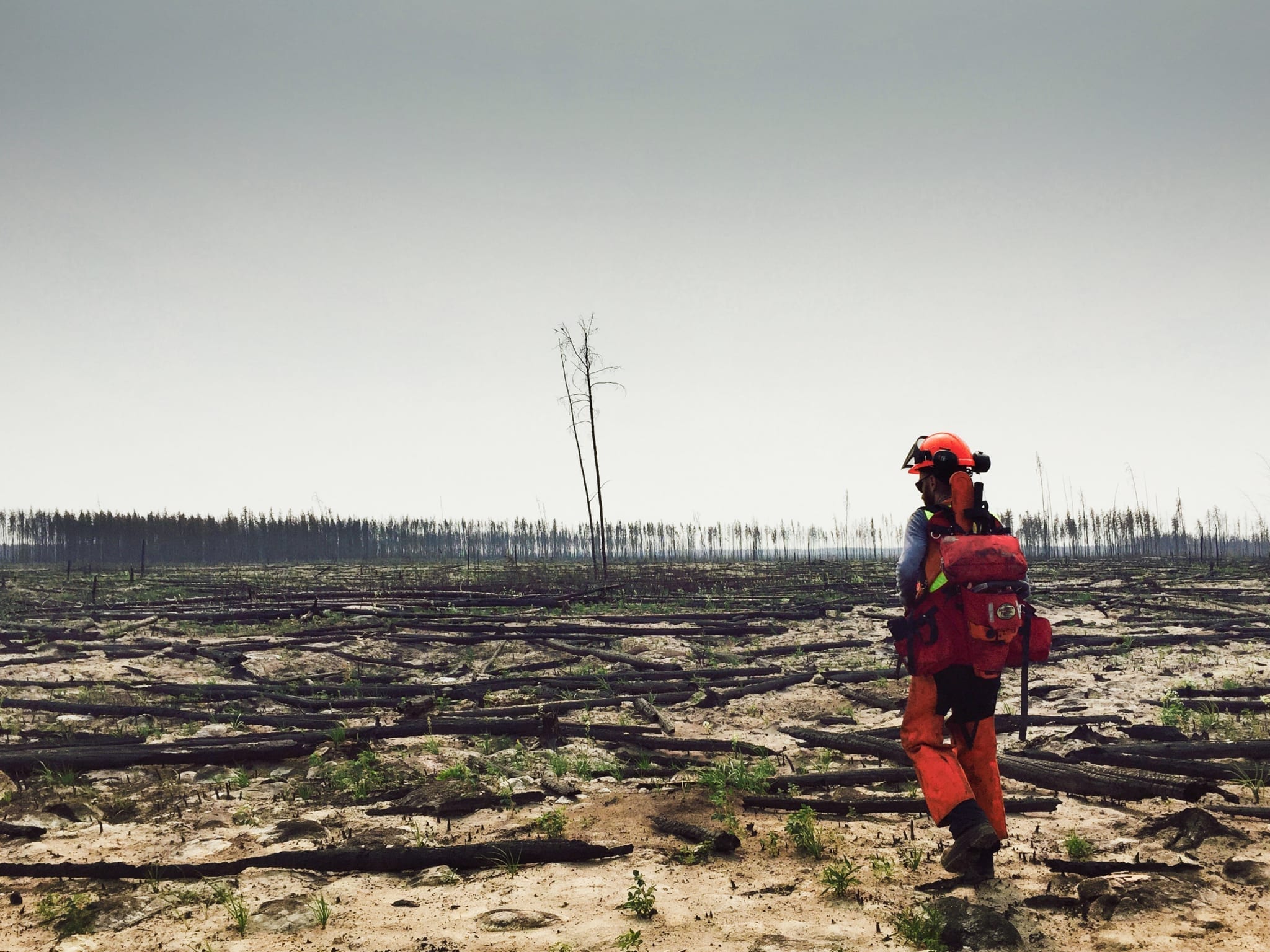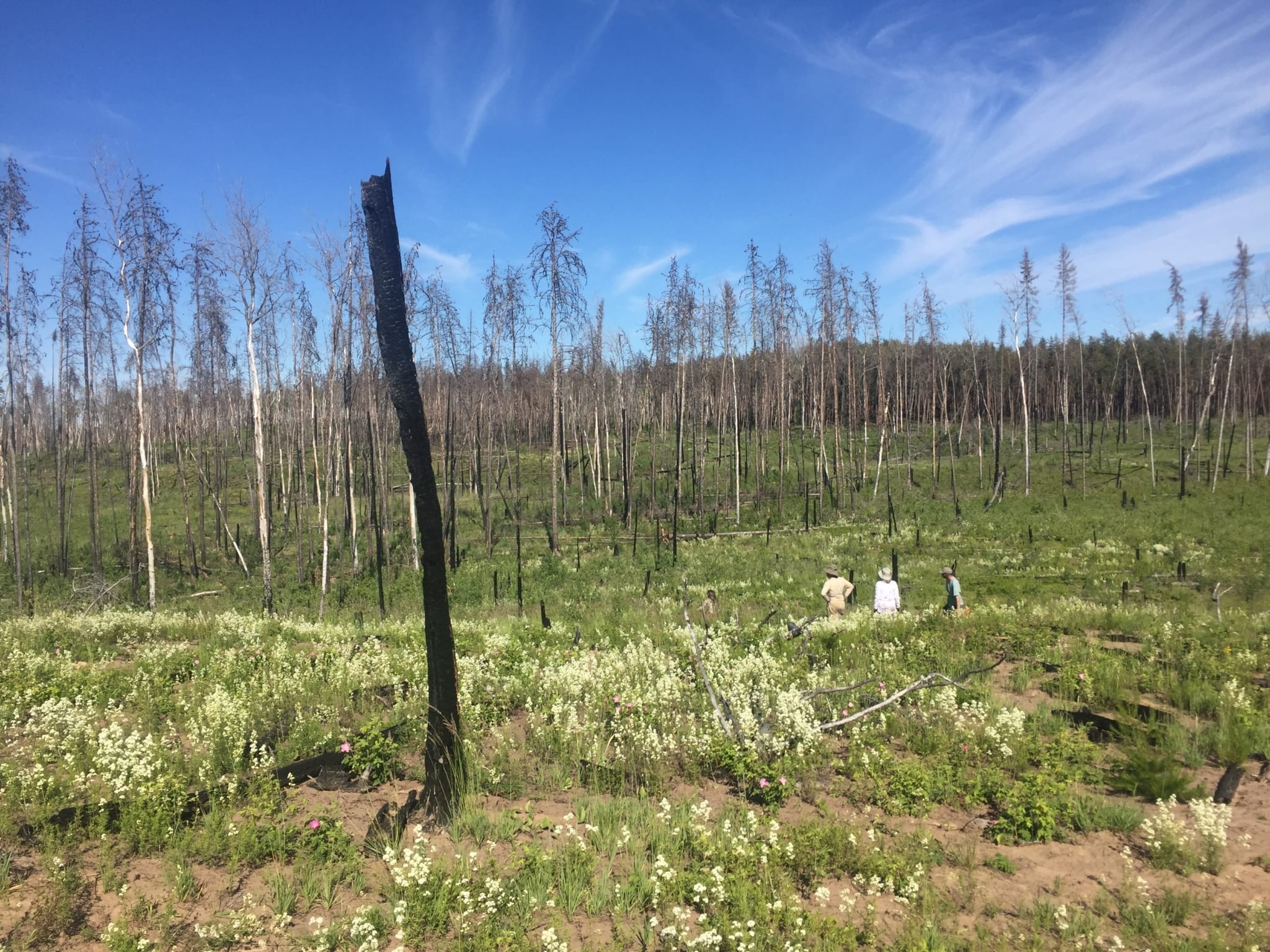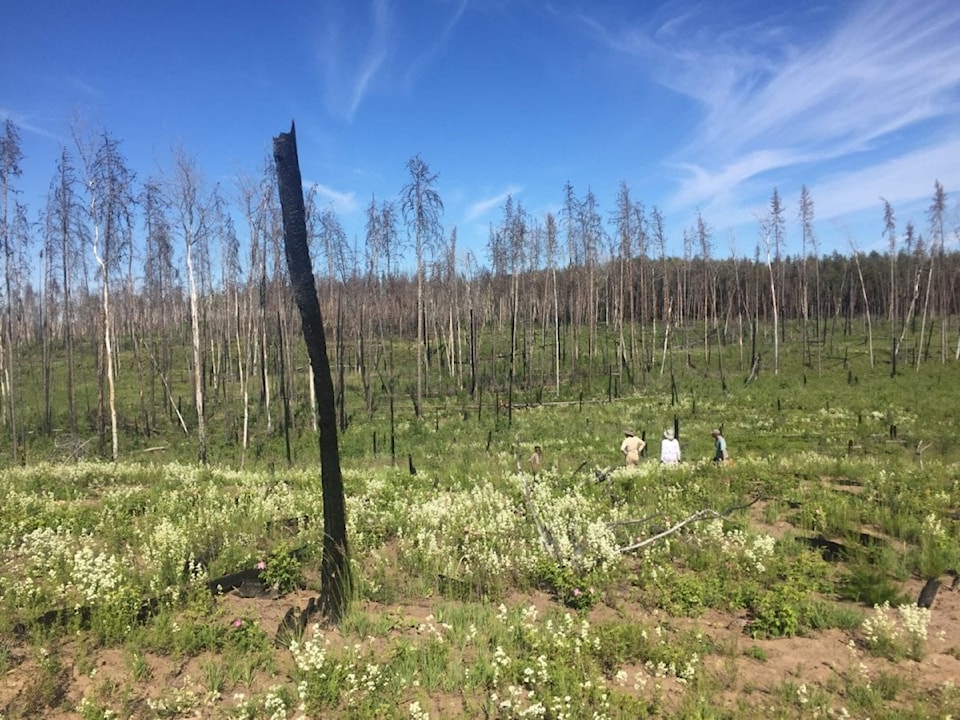Shorter breaks between fires could be changing the landscape in some of NWT’s forests, say Natural Resources Canada researchers.
That means a longer forest fire season – coupled with more hot, dry and windy days and instances of lightning – has contributed to fires burning in close succession and is changing plant life as a result, according to the researchers’ Dec. 11 paper published in journal Scientific Reports.

Photo courtesy of Natural Resources Canada
These fires happen every 20 years or more and are called short-interval reburns.
“Short-interval reburns are generally uncommon because the sites are fuel-limited. So if it’s experienced a fire recently, a lot of that biomass and carbon has burned away and there’s not much there left to burn,” said Ellen Whitman, one of the study's lead authors.
With recent increased fire activity, however, researchers found these short interval reburns, together with drought, can overwhelm fire resilience in the Boreal forest.
In some cases, the forests regenerated differently from those that experienced fire less frequently.
For example, they had fewer and less densely packed conifer trees. Instead, aspen typically dominated woodlands experiencing short intervals between fires.
Those sites also had other changes in their under-storeys, meaning fewer plants and species relative to the counterpart sites. In addition to less diversity, it also meant essentially fewer under-storey plants like grasses, flowers, and small shrubs – including plant-life such as blueberries and Labrador tea.
“From the perspective of someone who has a connection to the landscape, or is engaged in harvesting, or collecting foods or medicine, there are some changes from what you might expect at these short-intervals sites,” she said.
Human-caused climate change figures heavily into these circumstances, she said.
Whitman said climate change has led to higher temperatures, less humidity and stronger winds, plus more lightning strikes, all things that lead to more frequent and more intense forest fires, and a longer fire season.
Historically, an area that has burned is less likely to catch again since there is less fuel available, but these intensifying conditions are combining to make that factor "no longer important."

She explained the researchers became interested in the Northwest Territories after the 2014 wildfire season, which featured several short interval re-burn sites close to roads and communities.
“They look fascinating and strange right after fires,” she said, noting there are no silver-standing dead trees, or regrowing fire weed and other species like they would expect to find in a place where only one fire had gone through in the last 30 or 50 years.
Instead, there was simply ash and exposed soil, with some residual logs.
The researchers wanted to learn about how persistent and real these changes were. To do that, they set about comparing sites around Great Slave Lake and Wood Buffalo National Park.
This will all mean a shift in the forest structure and community that could last 100 years.
“We know that these changes are persistent. How long term and persistent they will be? It’s difficult to say,” said Whitman.
While Northerners are used to being smoked out each summer, she said, those circumstances are likely to happen more frequently.
“It is important to understand how a shifting fire regime will affect the risk to people, their health and their day-to-day experience of going out in the woods and seeing these changes in their landscapes,” she said. “It can be disappointing or just surprising. Historical rules of thumb are not going to be the case in all cases any longer.”
